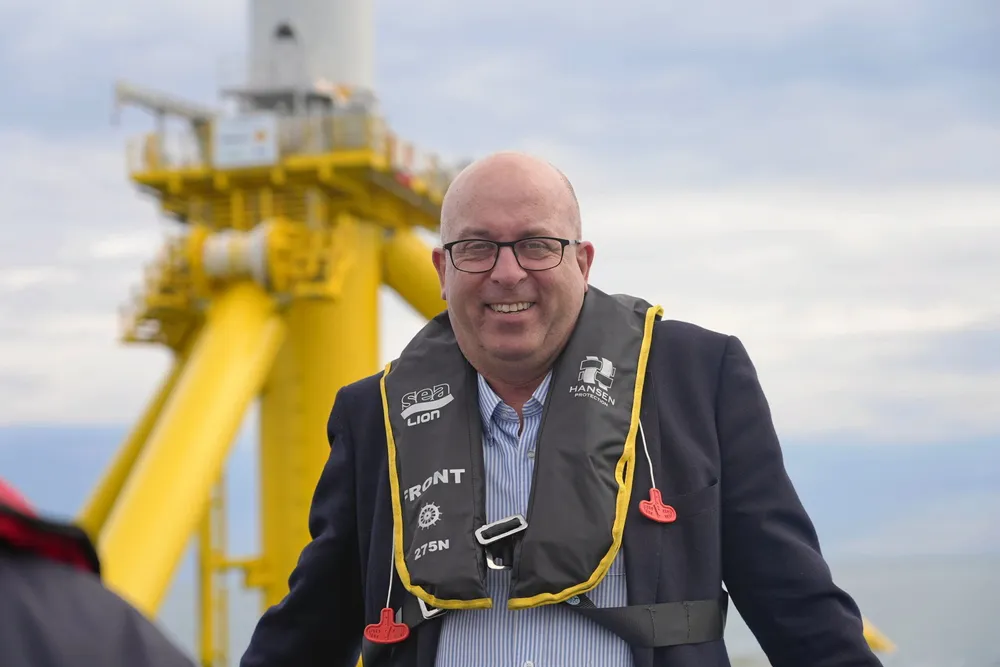Drop-outs, elections: is Norway's offshore wind dream sinking into the sea?
Pull-out of renewables giant Statkraft and Corio Generation put spotlight on remaining heavyweights such as Equinor or EnBW, while elections could also disrupt country's offshore wind policy

That leads to the question whether offshore wind – which, due to the deep waters on much of Norway's continental shelf, means mostly expensive floating wind – does have a future in the country at all.
Norway's outgoing government aims to get 30GW of offshore wind capacity in the water by 2040, up from a mere 101MW currently. Norway earlier this decade was still seen as one of the most promising future markets for wind at sea. But torturous delays to its first offshore wind tenders, coupled with factors affecting the industry in general and floating wind in particular (cost inflation, supply chain bottlenecks, rising financing costs), cooled down investor interest.
Industry experts nevertheless see a chance for the Utsira Nord tender to succeed, but also point to challenges.
“This shifts the risk burden onto developers during a period of heightened risk aversion. However, significantly reduced expectations for offshore wind across Europe elevate offshore wind capture prices in Norway, thereby strengthening the business case."
Equinor and EnBW still in race?
Arvid Nesse, CEO of industry lobby group Norwegian Offshore Wind, hopes that the upcoming floating wind auction will have a good result and points to an open competition with several groups still in the running.
Six companies or bidding consortia could still be in the race to be allocated one of the three project areas at Utsira Nord in a qualitative first auction and, at a later ‘maturation’ stage, win up to NKr35bn ($3.45bn) in state aid.
- Norwegian oil & gas giant Equinor and local energy outfit Vargronn
- French nuclear giant EDF and local company Deep Wind Offshore
- Ingka Investment, the investment arm of Ikea owner Ingka Group, Japan’s Kansai, Norway’s Odfjell Oceanwind and Source Gallileo
- Norway’s RES and Zephyr
- Germany’s EnBW
- A Energi (without Corio) if it finds a new partner, or joins another bid
Most companies are very tight-lipped when it comes to confirming their participation in upcoming tenders, so it is difficult to assess which of these potential bidders will really take part.
The initial list of potential bidders had featured a large share of oil & gas majors in joint ventures with other local entities and pure-play offshore wind developers, Alexander Flotre, head of offshore wind research at Rystad Energy, pointed out.
“Orsted has made a similar move, by focusing on bottom-fixed offshore wind, and value over volume.”
“The latter is important – firstly because it is a testament to Equinor’s commitment to continue to develop new offshore wind projects, and secondly because it shows that they still have ambitions in the floating offshore wind space,” Flotre reckons.
“Norway being their home market and [previously] having pushed for the development of their Trollvind floating wind project, should also point in favour of Equinor participating in the auction.”
Equinor said it continues to work with Vargronn on a possible joint bid in the Utsira Nord tender, but at this point, neither confirms nor denies that it will actually take part.
Vargronn CEO Stephen Bull was more forthcoming.
“Norway has a supply issue. It's actually a demand crunch that's coming up there. If you continue with the electrification of industry, transport, and oil and gas, Norway will not have enough power.
“And the supply chain is potentially phenomenal, with some of the world's best offshore (oil and gas) companies. It would be a crime not to use that for renewables.”
EnBW, another heavyweight in offshore wind, has sent out mixed messages.
The EDF and Deep Wind Offshore consortium could also be a strong contender. But EDF just won a 1.5GW sea lease area in the Celtic Sea, and the company, which in recent years was fully nationalised by France due to its enormous debt burden linked to nuclear commitments, may look very closely at where to spend large amounts of capex.
For several of the bidders, it could help that the Utsira Nord auction will be held in two stages – the first stage for the lease areas and the second stage for the state aid, Rystad’s Flotre pointed out.
“This means that developers can view the first stage as an option that they can later exercise if state aid and project- and market fundamentals allow them to move forward,” he said.
“Since the first stage is strictly qualitative, it is a fairly cheap option to compete for if you are a serious and committed bidder.”
Disruption after elections?
While the September 15 date for the first phase of the Utsira Nord tender will show whether there is still enough appetite among developers in the still immature Norwegian market at the moment, another event a week earlier may determine the industry’s longer-term prospects.
Voters on September 8 will decide whether the current government under Labour Prime Minister Jonas Gahr Støre get a second lease of life.
“The future development [of offshore wind] will depend on the elections. Labour in the government has been clear that they want to have 30GW by 2040,” Norwegian Offshore Wind’s Nesse said.
But the right-wing populist Progress Party (Fremskittspartiet), which currently seems the main contender to Labour in opinion polls, is against more offshore wind at this point. The Conservative Party (Hoyre), third in the polls, is against high state subsidies for offshore wind.
As no party is expected to win an outright majority, much will depend on negotiations to form a coalition government with one of the smaller parties to the right and left of the political spectrum.
(Copyright)